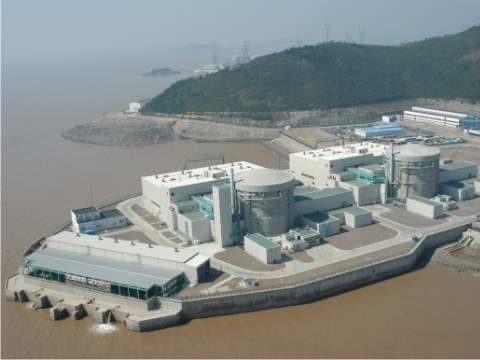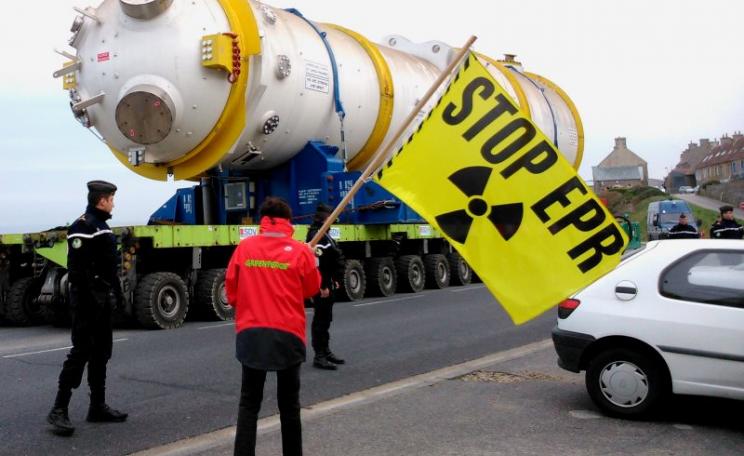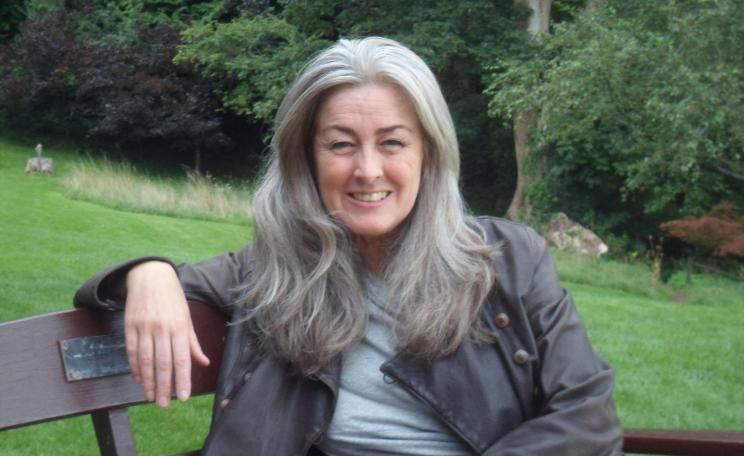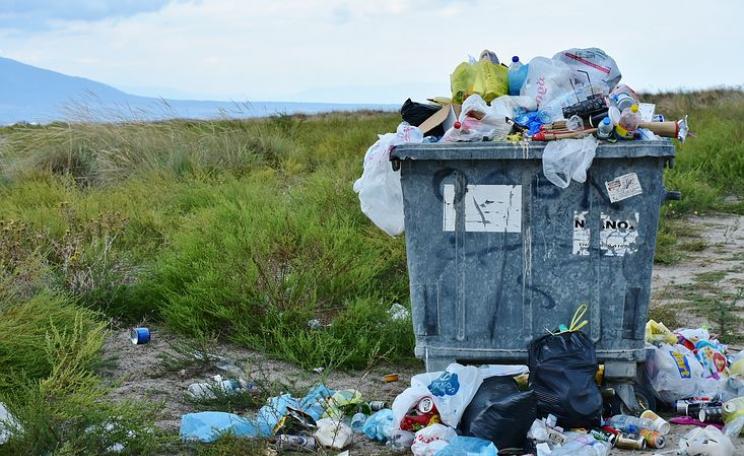The Government's announcement on Hinkley is a masterpiece of mendacity, and of chutzpah.
Nuclear power brings many casualties. The first of these is the truth.
According to the Government, the 'deal' announced with EDF and Chinese nuclear companies to build a pair of 1.6GW reactors at Hinkley Point in Somerset is an excellent one that will provide the country with safe, low cost and secure electricity.
This is a masterpiece of mendacity, and of chutzpah. The deal is a disastrous one for the UK, its taxpayers and energy users.
We will be locked into a punitively high electricity price, index-linked, from 2025 until 2060, and the cumulative cost of this one nuclear power station will be well in excess of £100 billion, or around £1 billion per year in today's money.
The deal is also built on a lie - that nuclear power is not receiving any public subsidy. The 'strike price' offered to EDF is a subsidy in all but name.
And it's only the beginning of the UK's largesse, which also cover Treasury financing guarantees covering 65% of the construction cost (£10 billion), underwriting of decommissioning costs and waste management liabilities stretching millennia into the future, and limitless insurance against nuclear catastrophes of the kind that struck Fukushima.
EDF will only be liable for the first €1.2 billion of costs arising from accident. Fukushima is conservatively estimated to have cost Japan over £300 billion. With free market insurance costs estimated at between €0.14 and €2.36 per kWh produced, the UK Government's insurance represents an additional subsidy worth €3 billion to €60 billion per year.
Locking the UK into over-priced power for decades to come
David Cameron has promised that "by investing in nuclear power we increase the chance that bills will be lower than if we did not invest."
But the truth is that he has no idea. None of us know what power prices will be in ten years time, never mind 45 years time. That would defy the predictive powers of Mystic Meg, never mind a government unable to foresee the share price of Royal Mail a week after its bargain-basement privatisation: over £5 versus a flotation price of £3.30.
But the indications are that power is likely to get cheaper, not more expensive. Not because fossil fuels will get cheaper (though George Osborne thinks they will, thanks to fracking), but because renewables like wind and especially solar power are on fast declining cost trajectories.
The Government's announcement on Hinkley is a masterpiece of mendacity, and of chutzpah.
Energy analyst Chris Goodall has calculated that investors in UK solar power are receiving a subsidy little greater that that offered to Hinkley C - and only for 20 years, not for the 35 years that EDF is promised. But the price of solar power has halved just in the last few years, and will carry on falling.
By the time Hinkley C is operational, probably around 2023-2025, the price of solar power will have halved again, maybe twice over, and will no longer need any subsidy at all. By 2050 solar power will be so cheap that it's close to being free. Yet EDF will still have another ten years left on its extortionate contract.
The growth of renewables has additional implications for Hinkley C. As the learned Mr Goodall points out, by the time the new reactors get going at Hinkley in or after 2023, the UK will probably have 35-40 GW of renewable capacity, or more if the cost of solar PV drops fast enough.
At times of low power demand, the UK will actually be oversupplied with electricity, and Hinkley could be required to cut back its production. "The proposed contract seems to guarantee to pay Hinkley even when it is curtailed in this way", reports Goodall. "By 2030, it could be stopped from operating perhaps 20% of the time, raising the implied price it is paid when it is working by an equivalent percentage."
And with further growth in renewables post 2030, that percentage will only rise. All the more so if EDF ever builds a second new nuclear power station at Sizewell C as the Government intends. So the UK's electricity consumers will be forced to well pay over the odds for the electricity they do consume - and then all over again for electricity they do not consume. EDF and China will laughing all the way to the bank. Here in the UK, we may not fully appreciate the joke.
The UK needs nuclear power the way fish need bicycles
What this comes down to is that in the renewable future that is fast coming upon us, we need nuclear power stations the way fish need bicycles. The Government speaks of Hinkley C as providing "secure, safe baseload power". But the entire concept of baseload power is becoming obsolete.
Supply from renewables is variable, as is demand by electricity consumers. What is needed to fill the gap between the two is not an inflexible 3.2GW, but power stations whose output can be modulated. For some to come the best fuel will be gas, which is relatively clean and low carbon, while modern gas power stations are highly efficient and can be ramped up quickly to meet demand.
The other problem with nuclear is that it can switch off at the blink of an eye in what is known in the trade as an 'unplanned outage', mostly due to a technical malfunction or safety issue of some kind, which may be as simple as jellyfish blocking cooling water intakes (as happened to EDF's Torness in 2011).
Currently the UK's biggest nuclear power stations produce about 1.2GW, and the Grid can already cover that much sudden outage. But lose 3.2GW all of a sudden and the Grid has a real problem on its hands. Conceivably a serious problem could force Hinkley B and C off at the same time, creating a 4GW supply hole. So much for' secure'.
So Hinkley C will force the UK to increase its short-term operating reserve by a large margin to accommodate a such a huge loss of power. In effect, the Hinkley nuclear juggernaut will need some big fossil fuel stations ready to kick in at very short notice. This is technically far more difficult to handle than the predictable variations in wind and solar output, and far more costly.
Yet this cost - forced by nuclear power - will be shared out among all electricity producers. Moreover it means that Hinkley C will have little effect in taking fossil fuel stations off line.
Safe? Remember the Bristol Channel tsunami of 1607
As for safe ... the hazards of nuclear power stations fall into two broad categories. The routine and foreseeable emissions like the radioactive noble gases that are pumped out the power station's chimney (did you ever wonder why nuclear power stations need a chimney?). And those from accidents. To focus on that second category alone, just how safe will Hinkley C be from a tsunami like that which hit Fukushima?
Not very. The Bristol Channel is very good at amplfying tidal surges, hence the 'Severn Bore', caused by spring tides being focused into a shock wave that moves up the channel at 15 km / hour or so and reaches a height of two to three metres.
Any tsunami coming in off the Atlantic is similarly amplified, and this is exactly what happened in 1607 when a huge wave surged up the channel flooding dozens of villages, inundating farmland as far inland as Glastonbury Tor, and causing thousands of deaths along 570 km of coastline.
A contemporary account speaks of "mighty hilles of water tombling over one another in such sort as if the greatest mountains in the world had overwhelmed the lowe villages or marshy grounds. Sometimes it dazzled many of the spectators that they imagined it had bin some fogge or mist coming with great swiftness towards them and with such a smoke as if mountains were all on fire, and to the view of some it seemed as if myriads of thousands of arrows had been shot forth all at one time."
Calculations by Simon Haslett and Ted Bryant indicate that the wave reached the upper Bristol Channel at a height of 7.5m, travelling at 15m / second, or about 55 km / hour.
No one knows the cause of the 1607 tsunami - though it is likely to have been a tectonic movement under the Irish Sea or Atlantic Ocean. There may not be another tsunami in the Bristol Channel for thousands of years. Or there may be one next week. A future tsunami may be smaller - or much bigger.
It could wipe out the entire Hinkley complex of nuclear power stations, with catastrophic results. If it has happened before it can - and ultimately will - happen again, sooner or later. Is Hinkley Point a safe place to build a nuclear power station? Hardly.
Commenting on the Hinkley C deal Energy Secretary Ed Davey made the gnomic observation that "For the first time, a nuclear station in this country will not have been built with money from the British taxpayer."
We can only hope that he is right - but not in the way that he intended.
Oliver Tickell has been appointed editor of The Ecologist website, effective 1st November 2013.
| READ MORE... | |
 |
COMMENT Fukushima: the nightmare continues Two and a half years on from the tsunami that caused several reactors to meltdown at the Fukushima nuclear plant north of Tokyo and we are still in the dark about the true extent of the danger to human life and ecosystems writes Lynn Batten...... |
 |
NEWS ANALYSIS Fukushima fallout damaged thyroid glands of California babies A new study finds that radioactive Iodine from Fukushima has caused a significant increase in hypothyroidism among babies in California, 5,000 miles across the Pacific Ocean. |
 |
COMMENT Nuclear assault on the poor, workers and UK economy Former Deputy Chair of the Liberal Democrats, Donnachadh McCarthy, writes to Lib Dem DECC Secretary of State Ed Davey about Hinkley C nuclear power station. |
 |
NEWS ANALYSIS Chinese nuclear disaster 'highly probable' by 2030 As the UK prepares to build a fleet of new nuclear power stations with Chinese capital and expertise, a former state nuclear expert warns: China itself is heading for nuclear catastrophe. |
 |
NEWS ANALYSIS The ring of eternal fire Nuclear Greens in a post-Fukushima world: Americans read the increasingly panic-stricken reports of meltdown at the Fukushima Daiichi nuclear-power plant in Japan and asked: 'Can it happen here?' They already knew the answer. |








